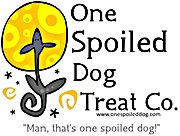Introduction
Treats are fundamental to successful dog training, serving as both rewards and motivators. However, not all treats hold the same appeal for dogs. The difference between high-value and low-value treats can make or break your training session. Understanding when and how to use each type of treat will help you get the best results from your dog. This guide explains the role of high- and low-value treats and how to effectively incorporate them into your dog’s training routine.
What Are High-Value and Low-Value Treats?
-
High-Value Treats
High-value treats are the most exciting and irresistible rewards for your dog. These treats tend to be moist, smelly, and flavorful—think pieces of cooked chicken, cheese, freeze-dried liver, or even hot dogs. High-value treats are usually reserved for special occasions, such as teaching challenging new behaviors or working in highly distracting environments. Because they are so tempting, high-value treats capture your dog’s full attention. -
Low-Value Treats
Low-value treats are rewards that your dog likes but isn’t crazy about. These are often dry, simple, and less exciting, like kibble, biscuits, or commercial dog treats. While they are less enticing, low-value treats are still effective for reinforcing known behaviors or for training in calm environments. Since they’re not as tempting, you can use them more frequently without overstimulating your dog.
When to Use High-Value Treats
-
New or Challenging Commands
High-value treats are essential when teaching new or complicated commands. Whether it’s “stay,” “recall,” or a more advanced trick, dogs need extra motivation when learning something unfamiliar. High-value treats help your dog stay focused and eager to cooperate, as they are excited by the prospect of receiving their favorite snack. -
Distractions and Public Settings
High-value treats shine in situations with high levels of distractions, such as at the park, during a walk, or in a busy area. In these environments, your dog’s attention may wander, and it can be difficult to keep them focused on you. Offering a high-value treat in these moments helps redirect your dog’s attention, ensuring they stay engaged in training despite distractions. -
Correcting Problem Behaviors
High-value treats are particularly useful when working to correct challenging behaviors, such as excessive barking, leash-pulling, or jumping on guests. These behaviors often require more focused effort to change, and high-value treats can provide the strong incentive your dog needs to stay calm or follow commands. For example, during leash training, offering a high-value treat for walking calmly by your side can shift their focus away from pulling. -
Reinforcing Behavior Under Stress
Some dogs may become anxious or stressed in new or overwhelming situations, such as car rides, vet visits, or thunderstorms. In these cases, high-value treats can help reduce anxiety by giving your dog something positive to focus on. The high reward value can encourage calm behavior and make stressful situations more manageable.
When to Use Low-Value Treats
-
Reinforcing Known Commands
Once your dog has mastered basic commands like “sit,” “down,” or “stay,” you don’t always need to use high-value treats to reinforce those behaviors. Low-value treats like kibble or simple dog biscuits are sufficient for maintaining these commands. By using low-value treats, you can continue rewarding your dog without overloading them with richer, high-value rewards. -
Calm Environments
Low-value treats are perfect for training in low-distraction settings, such as your home or backyard. In these environments, where there are fewer distractions, your dog’s focus is naturally stronger, so the lure of a basic treat is enough to reinforce good behavior. -
Extended Training Sessions
During longer training sessions, using low-value treats helps prevent overfeeding and overstimulation. If you’re practicing multiple commands in one session or working on skills your dog already knows, low-value treats provide reinforcement without causing excessive excitement. This keeps your dog engaged while maintaining a balanced energy level.
Balancing High-Value and Low-Value Treats
The secret to effective training is balancing the use of high-value and low-value treats. High-value treats should be reserved for special circumstances, such as when you’re introducing new commands or working in distracting environments. This keeps them special and ensures your dog remains highly motivated when you really need their full attention.
Low-value treats, on the other hand, are ideal for everyday reinforcement of well-learned behaviors. Since these treats are less exciting, they prevent over-reliance on food rewards and encourage your dog to perform commands even without the promise of an extraordinary treat.
Phasing Out Treats Over Time
As your dog becomes more proficient in their training, you’ll want to phase out treats gradually, especially the high-value ones. Start by rewarding your dog every other time they perform the desired behavior, and eventually move to using praise, affection, or toys as rewards instead of food.
Conclusion
Understanding the difference between high-value and low-value treats is essential for effective dog training. High-value treats provide strong motivation in challenging situations, while low-value treats are great for reinforcing known behaviors in calm settings. By strategically using both types of treats, you can keep your dog engaged and focused while preventing over-reliance on food rewards. With a thoughtful approach to training, you’ll help your dog learn faster, stay motivated, and enjoy the process.

